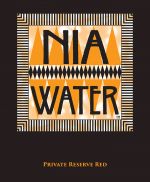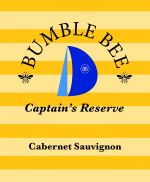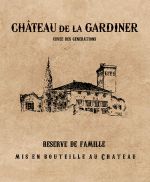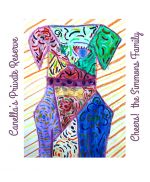
THE MANY FACES OF GRENACHE
Hi everybody! Here we are again. I know the pandemic continues and “the world situation is desperate as usual” to quote Tom Robbins. But what are we to do? No, I don’t mean politically. I mean when we are sitting, thinking, fretting, wondering, pacing, laughing deliriously, and deciding how to spend another evening. Well, I think you know what I am going to say. Yep, drink wine!
And this is the wine I have been exploring as of late – Grenache Noir, Garnacha, Garnacha Tinta, Granacha, Grannacia, Carignan Rosso, Alicante, Roussillon, Vernaccia Nera, Cannonau. Whew! Call it what you will; it is all what I will refer to generally as Grenache. This wine has a big story! It comes in a multitude of styles along with its many names. It can be red, white, rosé, sweet, fortified and sparkling. I have only investigated a very few of them which I’ll tell you about a little later. But I did come away with a wealth of information which I would like to share with you now.
Did you know that Grenache is one of the most widely planted grapes in the world? One source said that Grenache was the fourth most planted grape in the world. Another said it was the second most planted grape in the world. Another, the eighth. 2, 4, 6, 8…suffice it to say, it’s quite the debate. (Okay, so I’m not a poet…) But, in view of that, I can’t say for sure. But, out of over 10,000 varieties of wine grapes in the world, it’s way up there.
A GROWING HISTORY
This grape has a long history that dates back to the 15th century. It is said to have originated in Spain around a village called Cariñena located in the current Ebro Valley of Arogón midway between Barcelona and Madrid. Some of the old vines still exist in this village and still produce grapes. These vines are currently 100 years old! But, back to history, somewhere around 1415, Ferdinand 1, King of Aragón, took a nice trip to Nice in France. Following the Crown of Aragón through the centuries, Grenache took up residence on the islands of Corsica and Sardinia, then down to southern Italy, skipped to Sicily, crept to Croatia, and swam across the sea to Greece. By the 18th and 19th centuries, Grenache caught a ride on ships to non-European regions, landing in Australia and eventually California. This grape liked to travel, which probably has a lot to do with why it’s the two, four, six, eighth most planted grape in the world! And also explains why there are pockets of really old vines in both the Old and New World.
GRENACHE IN THE GLASS
This grape varietal loves hot, dry regions. It is a hardy and vigorous plant with a strong stalk that can withstand wind. In fact, in southern France, new vines are planted at a slant leaning into the wind so they eventually grow up straight and strong. Grenache ripens late with high sugar levels and can produce wines with alcohol levels as high as 15 to 16% abv. The general flavor profile includes red fruit flavors especially cherry, raspberry and strawberry. It is typically spicy and with its round fruit and low tannins it has an inherent compatibility with food. However, it is highly prone to oxidation. Even younger wines have potential to show “bricking,” the browning around the rim. As Grenache ages the wines take on more leather and tar flavors. Grenache can lack acid and color, it is translucent and, most often, medium bodied. This is why Grenache was traditionally used as a blending grape and used for years in simple jug wines. It needs careful control of yield for the best results.
ENTER THE RHÔNE RANGERS…
The Rhône Rangers movement in California in the late 20th century brought attention to the production of premium, varietal Grenache along with high-quality Syrah and Rhône style blends. Tablas Creek Vineyard in particular is notable for working with the Perrin family from the famed Châteauneuf de Pape appellation. Together they imported actual, live cuttings from Château de Beaucastel to plant and improve all of the Rhône varieties in California while also making them available to growers elsewhere. Now we know why they are called the Rhône Rangers – they’re the good guys!
Interestingly for us Washingtonians, Grenache was the first Vitis vinifiera grape to be successfully vinified in the early 20th century during the development of the Washington wine industry. And, it was a 1966 Yakima Valley rosé!
Okay, so here are some wines I tried to see what I could see. Or, rather, taste.
Pallas Family’s Reserve
Garnacha – Spain 2015 15.5% abv (alcohol by volume) $19.99
I found this wine to be initially more red fruit dominant but it opened up to reveal lots of rich dark berry with some sweet fruit. It was juicy, easy to drink and had a lovely finish of dusty leather.
Vielles Vignes
Vacqueyras AOP Rhône Valley – France 2014 14.5% abv $29.99
80% Grenache, 20% Syrah
Initially I found this wine to be very austere. It tasted a little sour with strong tannins, a little bright red fruit, and little to no finish. However, two days later (yes) the tannins had mellowed, I detected some blackberry, leather and dried field herbs. Better. I would say it had more finesse than the others I tasted.
Caladu
Cannonau di Sardegna DOC Jerzu – Sardinia 2016 14% abv $22.00
Well…don’t know how you will feel about this, but my impression is that it smells like raw red meat, in a good way! But the taste was a little fruity and soft with definite spiciness and dusty tannins. A soft floral, cherry finish. Tasty if you can get past the smell!
McCrea
Grenache Yakima Valley – Washington State 2011 14.8 % abv $33.99
I was a little leery of a 2011 after reading about the proclivity of Grenache to oxidize but I bought this anyway wondering how it would be. And…it was good! It did have the more brickish color of older wine and it didn’t last long after opening, but it was surprisingly complex with soft, gamey red fruit and leather and oregano on the nose followed by licorice, strawberry leather and cinnamon flavors on the palate. It was still juicy and fruity with a nice spicy finish.
And (shameless plug here) don’t forget to try Northwest Cellars very own newly released 2016 Madrigal. A GSM (traditional Rhône blend of Grenache, Syrah and Mourvèdre) with all the right stuff! Oh, and 94 points.
There are still styles out there I would like to try but that’s it for right now. It sure was fun comparing these wines and getting a handle on what characterizes Grenache. I would say: red fruit especially cherry, spiciness, cinnamon, and meaty, game notes. Of course there are the Tavel rosés to look into, not to mention the Australian blends and innumerable southern Rhône wines and California wines and, and, and…oh gosh, so much to look forward to!
Until next time,
Bottoms up!
~ Peggy












0 Comments